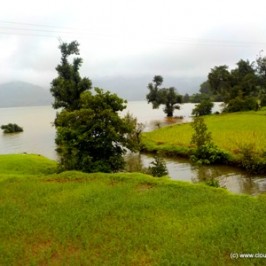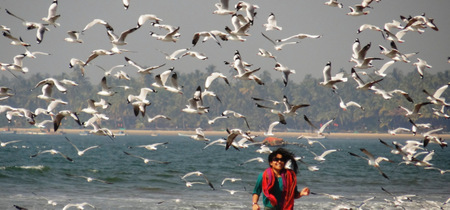Lahaul – Spiti Expedition by Road – Preparation & Roadmap
In a short notice, we have changed our Bhutan Road Trip due to certain unavoidable circumstances and have decided to explore Leh – Ladakh’s cousin Lahual – Spiti by Road. Remember the dates remain unchanged! Bhutan Road Trip is still in our wish list and we will cover the same next year. Exploring Lahaul Spiti region by road was also one of the top wish list in our wanderlust, as it is one of the most thrilling road adventures in India as well as around the world that involves passing through some of the most treacherous terrains in the world. The road to Spiti Valley commonly known as Hindustan – Tibet Highway is a destination in itself and also termed as one of the treacherous or deadliest roads of the world. The district of Lahaul-Spiti in the Indian state of Himachal Pradesh consists of the two formerly separate districts of Lahaul and Spiti.
The two valleys are quite different in character. Lahaul is much greener and developed but Spiti is more barren and difficult to cross, with an average elevation of the valley floor of 4,270 m (14,009 ft). We had covered a part of Lahaul region i.e. from Keylong onwards to Rohtang La in our last sojourn of Ladakh. Lahaul Spiti road trip offers spectacular view of barren mountain ranges of Great Himalayas with panoramic landscapes, the captivating culture, monasteries, prayer bells, Buddhist populace are the other aspect of travelling to this region by road. Finally, we have decided to conquer this adventurous journey by road in May 2017. Due to the toughness of this adventure we have started planning our tour from now onwards. Here we present a ready reckoner for the tour:
Acclimatization & Tour Schedule:
First and foremost we have planned our tour schedule with sufficient buffer and keeping in mind a rise to higher altitude from ground zero. Acclimatization is one of the most important things to prepare Lahaul Spiti Trip so that we are able to enjoy. Acclimatization is basically adapting to high altitude with low level of oxygen. Different people will acclimatize at different levels. There are chances of dizziness, headaches, vomiting, or even acute mountain sickness. One should be aware of altitude sickness and consult a medical practitioner and carry medicine accordingly. We have decided to enter Spiti via Kinnaur so that we can counter Acute Mountain Sickness and acclimatize ourselves with gradual increase in altitude. By this way we will be able to enjoy the journey from Kaza to Manali via Kunzum La as our body will be acclimatized after road travel via Kinnaur as well as time spent in Spiti Valley. To enjoy the route entirely we will complete the circuit as well i.e. We will enter Spiti Valley from Shimla and exit from Lahaul Valley to Manali. The schedule may look like only driving through rough terrains but it also includes excursions on the way. The schedule does allow us to capture the beauty and thrill during road travel and maximise every bit out of it. The minute details are already in place and the schedule is planned with a variance of 2 days. We will start our journey from Mumbai on 20th May 2017:
Acute Mountain Sickness:
Acute mountain sickness is caused by acute exposure to low partial pressure of oxygen at high altitude. The intake of Oxygen becomes less and therefore the breathing rate becomes higher. It commonly occurs above 2,400 metres (8,000 feet). AMS becomes severe as the elevation becomes higher. It’s always better to know what AMS is and how we can prevent it. This is one of the reason due to which we are approaching Spiti via Kinnaur to gradually ascend to high altitudes. There are preventive AMS medicines as well which can be consumed after consulting a physician. Kids can counter these conditions well and they should not have any illness before starting the tour.
Mild to Moderate Symptoms of AMS:
Headache, dizziness, fatigue, shortness of breath, loss of appetite, nausea, disturbed sleep, and a general feeling of malaise
Cure – Medication and descend of upto 600 meters
Severe Symptoms of AMS:
Inability to walk, decreasing mental status, Fever, Increased nausea and vomiting, Headache that does not respond to analgesics, and fluid build-up in the lungs
Cure – Immediate descend of upto 1200 meters
Tips for better Acclimatization:
- Ascend slowly to higher altitudes
- Medication – preventive medication after consulting with physician
- Oxygen enrichment – be aware of medical facilities near the followed route
- Carry Small Oxygen Kit
- Keep oneself sufficiently hydrated but beware of over hydration as well
- Do not spend much time at high altitudes and keep on moving
- Keep up the body warm
- Carbohydrates are the best energy supplement
- Take less exertion and indulge in light activities
- Carry preventive medicines for AMS
- Sleep in upright position, if possible
Basic necessity check for vehicle:
Before starting the trip, check the service of vehicle and ensure that it is in proper working conditions as mechanic shops are less found in this region. We will carry tool kits such as screw driver set, Basic toolkit, a few bottles of petrol or diesel, iron rod, small hammer and puncture repair kit. Also do pack an adhesive, funnel, wires or cables, towing rope, spare tube, M-seal and so on. Do not forget to check the service of your vehicle done before setting on for the journey.
Other important basic preparation:
- Keeping track of Fuel stations on route and carrying extra petrol or diesel in empty cans. It is also advisable to start full tank and whenever fuel station is available again get the tank filled
- Keep sufficient cash buffer in hand due to limited ATM facilities available in the region and possibility of short of cash in the machine
- Need to be careful about availability of hotels/tents/guest houses
- Keep track of inhabited areas and medical facilities available
- Carry essential warm clothes such as body warmer, cap, socks, jackets, hand gloves, and shoes
- Keep a lot of dry fruits in stock, chocolates, and food that is not easily perishable.
- Carry sufficient amount of drinking water and keep replenishing it
- Have gathered the information that MTNL/BSNL/Airtel/Vodafone post paid connection will work and be ready to be intermittently disconnected with the world
- Check for any permission to visit a place
We are open to get along with link minded travel enthusiast with self driven vehicles to join us on this sojourn. If interested you can reach us at: info@cloud9miles.com, cloud9miles@gmail.com








3 Responses
The Untourists
Good tips for prep. We made the same trip last year in November and loved every bit of it. I would add, carry offline maps, since internet won’t work in many places. We carried mapmyindia’s NaviMaps on an iPhone. Works wonderfully.
Himanshu & Shree
Hi Fellow Travellers, Thank you for the essential information. We have downloaded the map for offline navigation and also have Garmin navigator installed in our vehicle.
Dr sachin
Hi congratulations and thanks for the wonderful work.
Pls suggest a 15 days self drive trip ex delhi ( 21st may – 4 June 2017) covering must sees of lahaul spiti and leh ladakh combined.
Thank you